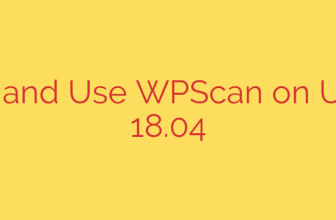
Unlocking AI on AWS: Oracle Autonomous Database Arrives on Amazon’s Cloud
In a landmark move for cloud computing, businesses can now run Oracle’s high-performance Autonomous Database directly within Amazon Web Services (AWS) data centers. This strategic integration, known as Oracle Database@AWS, eliminates the barriers between two of the world’s leading technology platforms, offering enterprises unprecedented flexibility, performance, and powerful AI capabilities without ever leaving the AWS environment.
This development is more than just a convenience; it represents a fundamental shift in how organizations can architect their data strategies, combining the best-in-class database management of Oracle with the vast ecosystem of AWS services.
Bridging the Gap for Unmatched Performance
For years, companies using applications on AWS that required an Oracle database faced a critical challenge: data latency. Connecting an application in an AWS data center to a database in Oracle’s cloud (OCI) could introduce delays that hampered the performance of mission-critical systems.
The new Oracle Database@AWS service solves this problem by co-locating Oracle’s database hardware and software inside AWS facilities. This means your application and your database can now operate in the same physical location.
The key benefits of this approach are clear:
- Drastically Reduced Latency: By removing the network hop between clouds, applications can access data with significantly lower delays, boosting speed and responsiveness.
- Simplified Operations: The service is fully managed by Oracle, meaning all the complex tasks of patching, tuning, backups, and security are handled for you.
- Unified Experience: Customers can procure the service directly through the AWS Marketplace, simplifying billing and integrating it into their existing cloud spending commitments.
The Game Changer: AI Vector Search for Your Private Data
Perhaps the most exciting feature of this offering is the integration of AI Vector Search directly into the Oracle Database. This cutting-edge technology allows you to perform searches based on semantic meaning and context, not just keywords. Think of it as searching for concepts and similarities rather than exact text matches.
This is crucial for building next-generation AI applications. It is the core technology behind Retrieval-Augmented Generation (RAG), a technique that makes Large Language Models (LLMs) like ChatGPT smarter and more accurate.
With AI Vector Search, you can:
- Build powerful generative AI tools that use your company’s private, proprietary data—such as internal documents, support tickets, and product manuals—to provide accurate, context-aware answers.
- Create advanced recommendation engines that understand user preferences on a deeper level.
- Develop semantic search functions for product catalogs or document archives, allowing users to find what they need with natural language queries.
By embedding this capability directly within the database where your enterprise data lives, you can securely leverage your most valuable asset—your data—to power innovative AI solutions.
Key Advantages for Today’s Enterprise
This integration delivers a powerful combination of benefits for businesses looking to modernize their infrastructure and accelerate innovation.
- Total Cloud Flexibility: You are no longer forced to choose between your preferred cloud provider and your required database. This multi-cloud approach provides the ultimate freedom to build the best possible technology stack for your needs.
- Enhanced Data Security: Your data remains within your existing AWS Virtual Private Cloud (VPC) and network perimeter, allowing you to maintain your established security policies and access controls.
- Growing Partner Ecosystem: The platform is supported by a growing network of partners. For example, integrations with data protection leaders like Cohesity ensure that your database backups can be seamlessly managed within the AWS environment, further unifying your data management strategy.
Actionable Security and Strategy Tips
As you consider leveraging this powerful new service, it’s important to approach it with a clear plan.
- Identify Latency-Sensitive Workloads: Start by evaluating which of your current applications are most impacted by data access latency. High-transaction systems, real-time analytics platforms, and customer-facing applications are prime candidates to benefit from this co-located architecture.
- Explore AI Use Cases: Brainstorm how AI Vector Search could solve real business problems. Could you build a better internal knowledge base for employees? Or a more intuitive product search for your e-commerce site? Starting with a specific, high-value use case will ensure a successful first implementation.
- Uphold the Shared Responsibility Model: While Oracle manages the database infrastructure, your organization remains responsible for securing access to the data itself. Ensure that your Identity and Access Management (IAM) policies within AWS are correctly configured to control who and what can connect to the database.
Ultimately, the availability of Oracle’s AI-powered database on AWS is more than a technical update—it’s a strategic enabler that empowers businesses to build faster, more intelligent, and more flexible applications for the future.
Source: https://datacenternews.asia/story/oracle-brings-ai-powered-database-to-aws-with-wider-partner-reach








